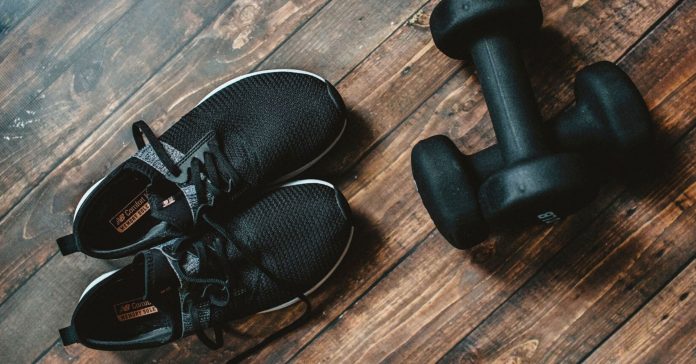Working out at home can add another string to your bow in improving your fitness and overall athletic performance. According to The Mayo Clinic, making fitness and exercise a part of your life – including home regimens – can benefit your fitness in ways that having scheduled physical activity cannot, with performance, mental benefits and recovery all enhanced through consistent at-home work. Fine-tuning your home workout regimen to benefit running will help you to convert these benefits from something general into a specific and measured boon to your overall health.
The weights
Many runners will not want to pack on muscle – or rather, they will want to keep to an ideal running weight. This means a strict diet, often, and time spent away from muscle-focused exercises. However contradictory it may seem to pack more weight onto the body, it remains that a degree of weight-training can help you with your athletic performance. This is true whether you need the explosive lean muscle of a 100m sprinter, or the conditioning of a long-distance runner.
Dumbbells and barbells are some of the most ideal fitness equipment for exercising at home that you can obtain for overall physical benefit, but doing this work properly lies in one specific time period. A study analyzed by Scientific American held that you should separate forms of activity out so they never cross-over within a six-hour period. This means keeping your weights to one day and cardio to another. Otherwise, the contradictory exercises can lessen the benefits of each other and create an enhanced risk of injury.
Preventing injury
Injury is very prevalent among runners. According to an important 2019 study published by the British Medical Journal found that preparation for running events holds a 20% injury risk alone. One of the best ways to prevent injury comes through regular stretching and flexibility exercises; the home exercise environment is perfect for this. Whether that’s taking regular stops through the home and doing mini-stretch sessions; think a leg here when at the stove, or doing full-body stretches when drying off from a shower, or something more long-term like yoga. Whatever method is chosen can have a great positive impact on body flexibility and help to prevent damaging long-term injuries.
Improving mental health
The majority of a person’s time is spent at home these days – that’s a lot of time given over to reflection and quietness, away from the hustle and bustle of cities and towns. This creates an opportunity to improve mental health, something which has a well-founded impact on athletic performance. Whether recovering from injury or having the mindset to be able to push through pain barriers when in the race, mental health is incredibly important. Making mental health part of a home exercise regime is entirely possible, too. Yoga is again a great example of exercise that includes both aspects of whole-body health, but it can also be something as simple as meditating while doing aerobics, or listening to helpful advice or philosophy while on the treadmill or working weights.
Brought together, the home provides a great studio for positive physical enhancement. There is so much you can do to help your body prepare for the rigours of a race, and that can be accomplished without stepping outside the door. Consider that for next time you’re training.


